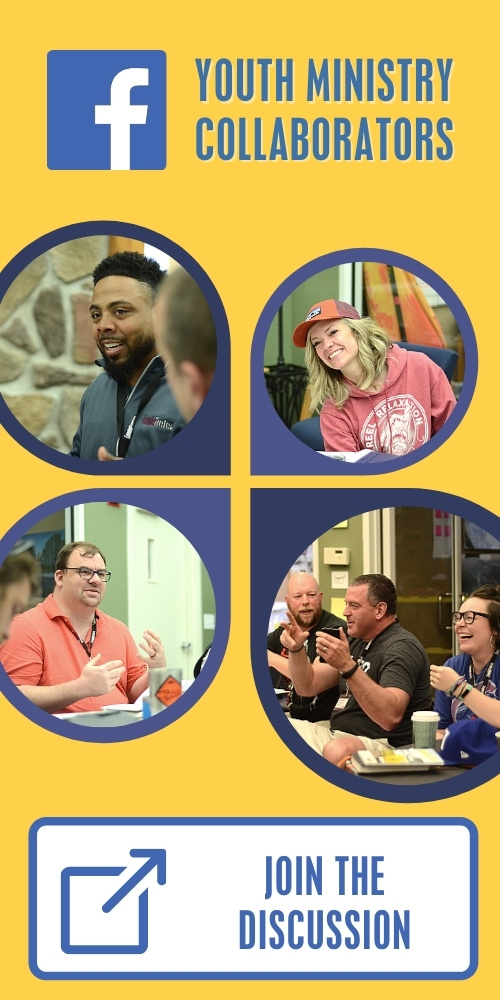Helping Students Plug In by Aaron Kirkpatrick
My guess blogger today is Aaron Kirkpatrick, he is the Youth and Family minister at the Chenal Valley Church in Little Rock, AR …. Thanks Aaron!
Few things in student ministry are as frustrating as teenagers who should plug into our ministries but don’t. We do everything we can to help these students: we plan stuff we know they’d enjoy if they’d only come, we make our gatherings welcoming and warm, we train our volunteers to engage kids who seem to be on the fringes, and we reach out to disconnected students individually, but they still. don’t. plug. in. At some point we begin to believe that these students want to be disconnected, and we move on to the many other students who need our attention and time.
If this scenario hits close to home, then I’d like to challenge you to re-look at how you’re approaching disconnected students through the lens of better leadership.
Recently I’ve been reading Lee Cockerell’s excellent book, “Creating Magic: 10 Common Sense Leadership Strategies from a Life at Disney.” (Amazon Link: http://amzn.to/WJ5LS1) In a chapter titled “Remember, EVERYONE is important,” Cockerell said something that struck me like a slap in the face. Here’s what he said:
“Anyone who feels left out is left out.” (emphasis mine)
Stop. Go back and read that a few times and really absorb the implications of those words. I’ll wait…
Now, maybe that statement has been obvious to everyone but me, but if you just had an ah-ha moment as well, then we have an opportunity to lead our groups into a healthier place.
The problem with kids who don’t plug in is that they usually have really good explanations for why they’re disconnected, but we don’t believe their reasons are actually true. They say things like “I don’t have anything in common with the other teens,” and “All of my friends go somewhere else,” or “Everyone else in the group are really good friends. There’s no room for me.” From our perspective as youth leaders who so desperately want each student to be connected to our group in a meaningful way, these answers can sound like half-hearted cop-outs. However, as I have mulled over Cockerell’s quote, I realize that I’ve been missing something – no matter what I think I’ve done to plug in a student, and no matter how easy I think it should be for a student to connect, if that student feels like he or she doesn’t fit in or isn’t being included, perception is reality. A student’s belief that she doesn’t fit in makes it absolutely true for her. Our responsibility as youth workers is to be constantly searching for how we can help our disconnected students feel like they belong. Here are a few steps that can help you start making your teens feel like they fit in.
1. Acknowledge that your students’ feelings of non-belonging are valid and true. This is a simple step, but it can have a profound impact on how you interact with these students.
2. Focus on who your students are as individuals. What makes them tick? Is that disconnected boy really into baseball? Does that misfit girl spend a lot of time on Instagram? Does she prefer being outdoors or indoors? Does he get excited about athletic activities, or is he more comfortable around an Xbox? Identifying what makes your students tick leads you to the final step:
3. Connect them with other students and adult volunteers who enjoy the same things. Nothing makes people feel like they fit in with a group faster than doing something they enjoy with other people who love that activity as well. And when they’re having a blast with your group members, it’s your job as a leader to call that out. Help them realize how much they’re enjoying themselves, and emphasize how well they’re connecting.
Of course, the best leaders rarely work alone. If your ministry is really going to become one that focuses on kids who don’t feel like they fit in, you’re going to need your volunteers to be operating with that same sense of purpose. To that end, I’m providing you with some questions to get the conversation started with your team. You can send them in an email, ask them one-on-one, or call a meeting and spend time talking through them and developing a plan of action. However you go about it, your disconnected teens will be blessed by your renewed vision for helping them feel connected to your group and, through their involvement with your group, more deeply connected to God.
1. Who are the students in our group who are on the fringe? Is it possible that those students aren’t plugged in because they feel they don’t belong or are left out? Why might those students feel left out?
2. Are there students who legitimately are being left out or overlooked? If so, why? How can we change that?
3. What can we do (as youth workers and as a group as a whole) to help students feel included and wanted?
4. What are our practical next steps?
Here’s the good news: the flip side of Cockerell’s statement is true as well. If a student feels like they do fit in and are included, wanted, and necessary, then that perception becomes their reality as well. And you can make that happen!
About the Author
Guest Contributor
The LeaderTreks Blog is proud to share the hard-earned wisdom of student ministry leaders from many different backgrounds and professions. From time to time, we will feature guest blog posts from writers other than our regular contributors. We include these posts to provide additional perspectives and insight that we’re sure will help develop you and your ministry… Read More




